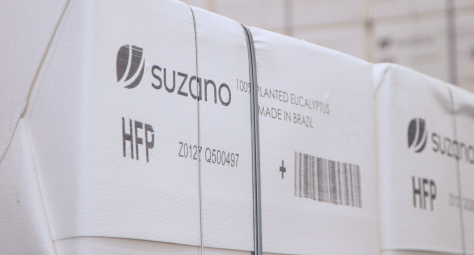sobre o que você deseja falar?


perguntas, sugestões ou problemas técnicos envolvendo a plataforma

informações sobre a empresa







Dimensão GRI
EnvironmentalCódigo GRI
305-1Código GRI
305-2Código GRI
305-3TCFD
Related IndicatorsCompromissos para renovar a vida
Carbon balance (CO₂): is the difference between anthropogenic emissions and removals of greenhouse gases (GHG) from the atmosphere over a given period of time.
Removals: carbon dioxide removals (CDR). They refer to removing CO₂ from the atmosphere, according to the Intergovernmental Panel on Climate Change (IPCC).¹ Being the opposite of emissions, practices or technologies that remove CO₂ are often described as achieving "negative emissions". There are two main types of CDR: from improving existing natural processes that remove carbon from the atmosphere (for example, by increasing its absorption by trees, soil, or other "carbon sinks"), or from chemical processes to, for example, capture CO₂ directly from ambient air and store it elsewhere.²
Afforestation (planting new trees in areas without forests) and reforestation (replanting trees in areas where there were forests but they have been converted) are also considered CDR forms because they increase natural CO₂ sinks.³
The IPCC warned, in its report on climate change mitigation,⁴ that keeping the temperature rise within the 1.5 °C limit will be impossible without carbon dioxide removals. Removals can offset GHG emissions from sectors that cannot completely decarbonize their activities or may take a long time.
Carbon stock: according to the IPCC, is the amount of carbon held within a reservoir at a specific time. Oceans, soils, and forests are examples of carbon stocks.
The carbon stock in a reservoir or pool can change according to the difference between carbon additions and losses. When losses are more significant than additions, the carbon stock becomes smaller, so the reservoir acts as an emission source to the atmosphere; when losses are less than additions, the reservoir acts as a sink.
Balance (removals and emissions), removals and carbon stocks at Suzano
Suzano's carbon balance is calculated from the difference between scope 1, 2 and 3⁹ emissions and the balance between emissions and direct removals from land use (net removals by land use).
Carbon removals occur when forest biomass grows - for example, when even a single tree is planted in a pasture area or when an already planted area is increased from 500 to 600 hectares.
Thus, when there is an increase in the volume of biomass in a given Suzano area, its equivalent increase in carbon is considered to be "direct removal by land use change". On the other hand, when there is a reduction in the volume of biomass (such as during harvesting periods), the equivalent loss in carbon is considered a "direct emission due to land use change".
The company's carbon stock is the balance between all the direct emissions and removals from land use in forest areas that occurred in a given year (or an annual "snapshot" of all the carbon stored in its natural reservoirs).
As a company that carries out responsible forest management, Suzano has eucalyptus plantation areas in which the process of planting, harvesting, and conserving the native forest is like a mosaic. In this way, the company maintains a constant carbon stock, with the conservation areas stabilized or growing and removing carbon from the atmosphere and the eucalyptus cultivation areas, mainly with growing seedlings. The CO₂ removal value linked to the environmental restoration process and the High Conservation Value Areas (HCVAs) are included in the removal values of the native vegetation areas.
About the planted forest areas, as Suzano has a cultivation cycle of approximately seven years, only one-seventh of the planted forest areas are under constant harvest. To varying degrees, the other six-sevenths of the planted forest areas are storing carbon over time and ensuring that this stock remains in the field.
Calculation methodology
The method currently used to estimate carbon removal in eucalyptus plantations aligns with international methodologies based on IPCC guidelines. Carbon removals were calculated using the "stock change method", by the IPCC Guidelines for National Greenhouse Gas Inventories (volume 4, chapter 4).⁵
To calculate removals, data from the Cadastral Inventory of plantations older than 2 years are used. In this way, carbon removals in 2024 reflect the increase in biomass from plantations until 2022 and the loss of biomass from harvests in 2024. Plantations in 2023 and 2024 will only have their removals accounted for in the Carbon Stock and Removals Inventory from 2025 and 2026, respectively.
Thus, GHG removals by planted forests are calculated using the stock change method following IPCC guidelines. To calculate the carbon stock (which increases as the vegetation grows and decreases when harvested), Suzano uses data from its forest registry database, which includes information on areas in hectares, separated by age and clone, density, and volume of biomass for each of these ages. Based on this information, the IPCC-recognized conversion factors (C to CO₂), the above-ground and below-ground biomass proportion factor, and biomass expansion factors (BEF) are applied, and carbon stocks are calculated.
For areas earmarked for conservation and restoration, the gain-loss method is used to calculate the volume of carbon removals, a methodology also recommended by the IPCC guidelines. This calculation uses information and data from the company's forest registry combined with carbon stock factors by phytophysiognomy, biome, and successional stage (level of forest maturity).
All these factors come from Brazil's most consolidated and recognized bibliographical references and the IPCC itself.
GHG Protocol Land Sector, Removals Guidance , and SBTi FLAG
The GHG Protocol is an initiative of the World Resources Institute (WRI) and the World Business Council for Sustainable Development (WBCSD) that establishes standards and guidelines for measuring and managing GHG emissions from public and private sector operations, value chains, and mitigation actions.
Since 2020, the GHG Protocol has developed the Land Sector and Removals Guidance⁶ to help companies account for and report their GHG emissions and removals related to land management, land use change, biogenic products, carbon dioxide removal technologies, and related activities in GHG inventories, based on the Corporate Standard and Scope 3 Standard.
Based on its vast experience in forest inventories and inventories of carbon emissions and removals, Suzano has collaborated in developing this new Guidance as a member of the Advisory Committee through technical sector discussions and participation in public consultations promoted by the GHG Protocol.
In 2023, the company took part in the pilot test phase of the Guidance and submitted its contributions to the guidelines and calculation methods proposed by the methodology. It assessed using its data involving specialists from various company areas to do this. Following the publication of the final version of the Guidance, Suzano will evaluate its internal emissions and carbon removal inventory procedures against the new GHG Protocol guidelines and update them if necessary.
The Guidance is also of great importance to the company because its methodology is used by the Science Based Target Initiative (SBTi) in its own Forest, Land Use and Agriculture (FLAG)⁷ guide for companies in land-use intensive sectors to set science-based targets that include reducing forest and land-use change emissions (LULUCF) and carbon removals.
In 2023, SBTi announced⁸ that companies in the agricultural and forestry sectors wishing to submit new targets or update already submitted fossil emission reduction targets should also submit a LULUCF emission reduction and removals target following the FLAG Guidance and the pilot version of the GHG Protocol Land Sector and Removals Guidance. Following its commitment made in 2021 to the Business Ambition for 1.5°C and SBTi initiatives, Suzano submitted for validation its emissions reduction and CO₂ removal targets in line with the methodologies and guidelines stipulated by SBTi, attaching to the process a series of documents to support SBTi's analysis and demonstrate points of inconsistency in the FLAG tool calculations for the forest products and paper sectors. In December 2023, SBTi announced that this FLAG methodology has been temporarily suspended specifically for the forest products and paper sectors and is not currently available for application.
Therefore, Suzano will continue in 2025, reviewing and approving its mitigation commitments with SBTi. It will remain available and active for finalizing the GHG Protocol Land Sector and Removals Guidance and participating in reviews and improvements of the FLAG methodology with SBTi.
The following information is available in the tables below:
Notes:
| 2020 | 2021 | 2022 | 2023 | 2024 | |
|---|---|---|---|---|---|
| tCO₂e | tCO₂e | tCO₂e | tCO₂e | tCO₂e | |
|
Scope 1 emissions |
2.155.102,69 |
2.328.335,53 |
2.378.304,09 |
2.421.049,08 |
2.283.987,65 |
|
Scope 2 emissions |
59.531,90 |
137.822,64 |
49.216,75 |
49.237,12 |
87.000,59 |
|
Scope 3² emissions |
1.568.893,44 |
1.842.093,64 |
1.737.960,57 |
1.643.791,84 |
1.546.971,50 |
|
Total emissions |
3.783.528,03 |
4.308.251,81 |
4.165.481,41 |
4.114.078,04 |
3.917.959,74 |
|
Carbon credits traded³ |
0,00 |
0,00 |
0,00 |
25.139,00 |
19.580,00 |
|
Balance between land use emissions and removals |
-18.983.839,64 |
-13.204.509,36 |
-2.080.751,67 |
-9.238.526,38 |
-6.219.533,72 |
|
Total balance (emissions - removals) |
-15.200.311,61 |
-8.896.257,55 |
2.084.729,74 |
-5.099.309,34 |
-2.281.993,98 |
| 2020 | 2021 | 2022 | 2023 | 2024 | |||||||||||
|---|---|---|---|---|---|---|---|---|---|---|---|---|---|---|---|
| Suzano - planted forests | Suzano - native vegetation | Suzano – total | Suzano - planted forests | Suzano - native vegetation | Suzano – total | Suzano - planted forests | Suzano - native vegetation | Suzano – total | Suzano S.A. - planted forests | Suzano S.A. - native vegetation | Suzano S.A. – total | Suzano S.A. - planted forests | Suzano S.A. - native vegetation | Suzano S.A. – total | |
| tCO₂e | tCO₂e | tCO₂e | tCO₂e | tCO₂e | tCO₂e | tCO₂e | tCO₂e | tCO₂e | tCO₂e | tCO₂e | tCO₂e | tCO₂e | tCO₂e | tCO₂e | |
|
Biogenic emissions by land use |
33063426,44 |
n/a |
33.063.426,44 |
35.504.588,97 |
n/a |
35.504.588,97 |
44.887.590,43 |
n/a |
44.887.590,43 |
44.246.396,10 |
n/a |
44.246.396,10 |
45.924.361,58 |
n/a |
45.924.361,58 |
|
Biogenic removals by land use |
-48.231.510,96 |
-3.815.755,12 |
-52.047.266,08 |
-44.824.539,53 |
-3.884.558,80 |
-48.709.098,33 |
-43.067.325,76 |
-3.901.016,34 |
-46.968.342,10 |
-49.441.544,13 |
-4.043.378,36 |
-53.484.922,48 |
-47.180.301,46 |
-4.963.593,84 |
-52.143.895,30 |
|
Balance between emissions and removals from land use |
-15.205.266,10 |
-3.815.755,12 |
-18.983.839,64 |
-9.319.950,57 |
-3.884.558,80 |
-13.204.509,37 |
1.820.264,67 |
-3.901.016,34 |
-2.080.751,67 |
-5.195.148,03 |
-4.043.378,36 |
-9.238.526,38 |
-1.255.939,88 |
-4.963.593,84 |
-6.219.533,72 |
| 2020 | 2021 | 2022 | 2023 | 2024 | |
|---|---|---|---|---|---|
| tCO₂e | tCO₂e | tCO₂e | tCO₂e | tCO₂e | |
|
Suzano S.A. - planted forests |
164.799.325,93 |
170.785.672,50 |
160.351.112,79 |
164.037.657,51 |
168.129.354,80 |
|
Suzano S.A. - native vegetation |
150.992.295,12 |
165.973.008,90 |
150.992.295,12 |
171.492.435,98 |
154.091.259,83 |
|
Suzano S.A. – total |
315.791.621,05 |
336.758.681,41 |
315.791.621,05 |
335.530.093,49 |
322.220.614,63 |
Carbon balance
The carbon balance considers emissions and removals in Suzano's operations. The breakdown of greenhouse gas emissions can be found in the “Greenhouse gas (GHG) emissions and methodology” indicator. In 2024, maintaining the trend of the historical series, the company had a negative carbon balance, which means that our forestry operations removed more carbon from the atmosphere than is emitted throughout the company's operational chain (partial scope 3) and contributed positively to reducing the global effects of climate change.
Carbon removal
In 2024, we had total removals (anthropogenic biogenic) of 52 million tons of CO₂ from the atmosphere and total emissions (anthropogenic biogenic) of 46 million tons of CO₂, resulting in a balance of 6 million tons of CO₂ removed from the atmosphere in 2024.
The balance sheet considers plantations (aged 2 years or more), forest growth, harvesting, and forest-based management in the current year. The result of Suzano's removals is due to the entry of planted bases in recent years, in addition to the maintenance of current forests, in line with the movement to expand the forestry base that will provide the company with greater resilience and wood supply in the long term, in line with its business strategy.
Carbon Stock
In 2024, the carbon stock of the planted areas eligible for the calculation methodology increased. With a movement to expand the forestry base in line with the growth of our forests, the stock guarantees a permanent carbon reserve in Suzano's areas.
Native vegetation, on the other hand, increased in area in 2024. Still, a lower carbon stock compared to the previous year due to calculation adjustments that returned it to be comparable with the historical series until 2022. The growth of this stock is natural and continuous in preservation areas and in line with constant refinements/improvements in the process of classifying native areas with more granular updates of phytophysiognomies in subclasses, according to the Brazilian Institute of Geography and Statistics (IBGE).
For 2024, both emissions and removals were verified by a third party.
Suzano will continue with its forest-based expansions in line with its strategy of positioning itself in the pulp and bioproducts market. Its conservation and ecological restoration program will result in increased removals over the years, contributing to the achievement of the Commitment to Renew Life in this area.